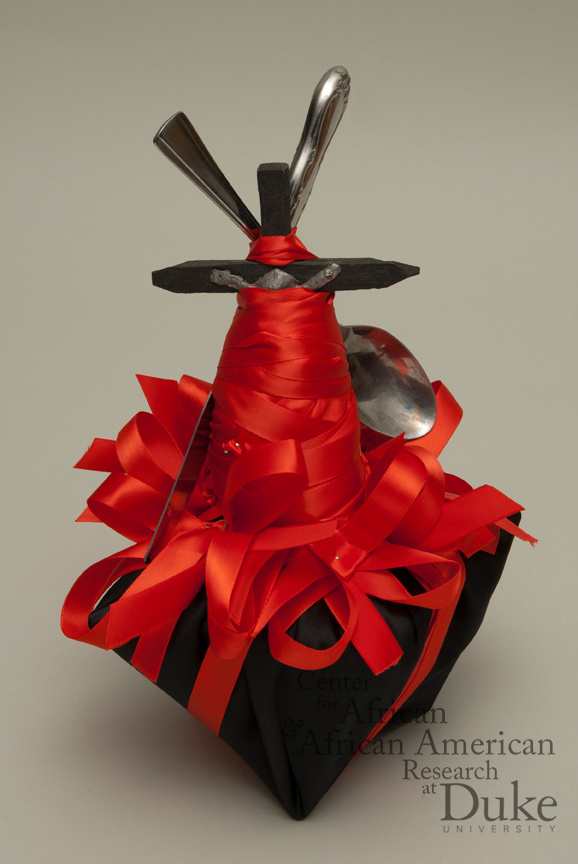
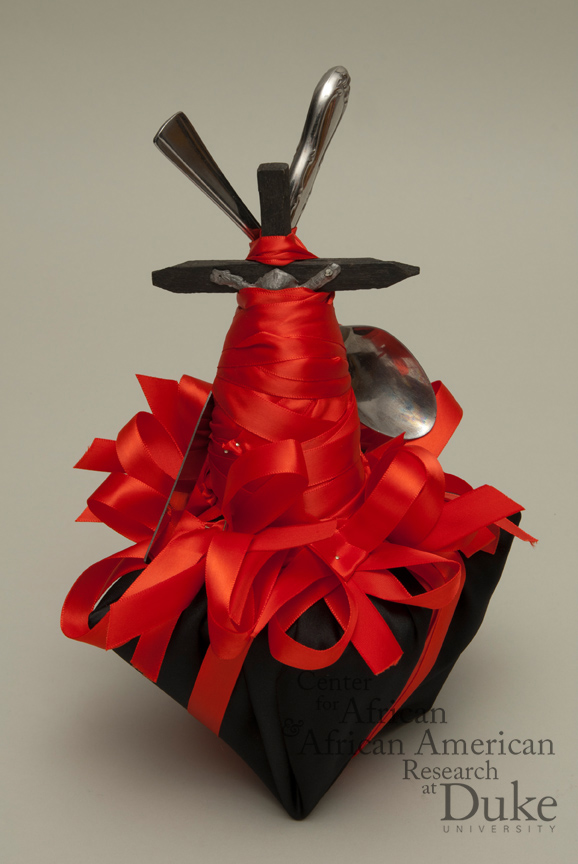
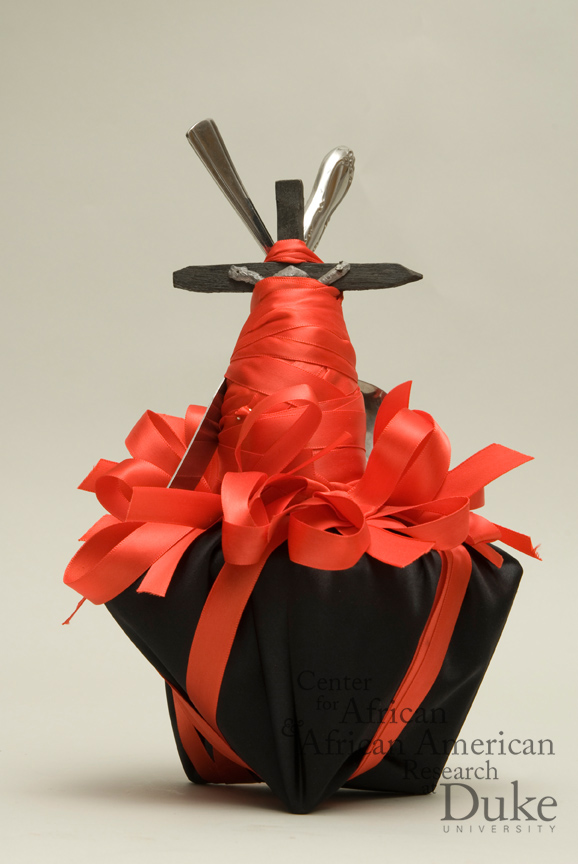
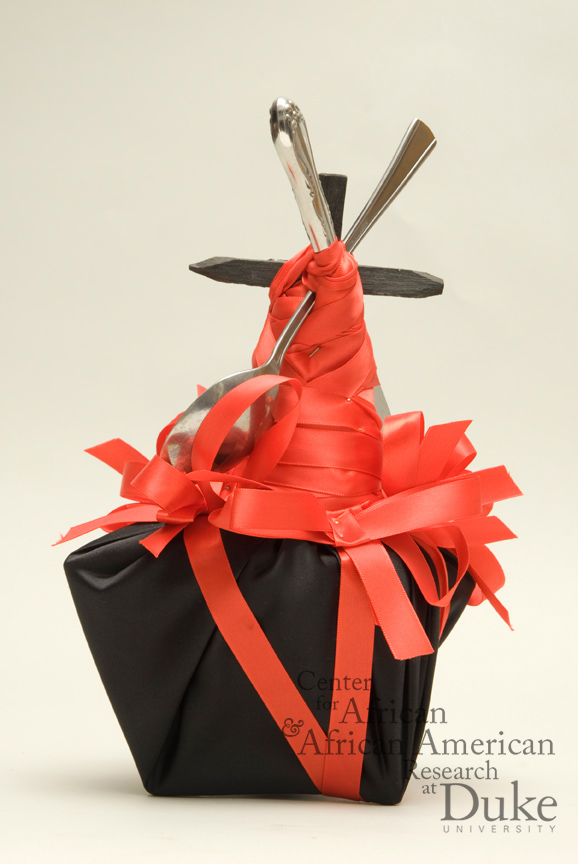
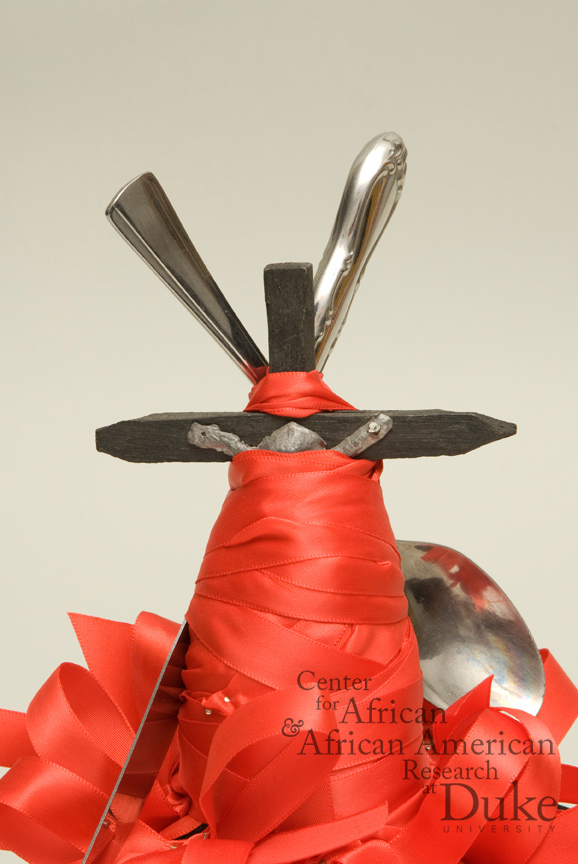
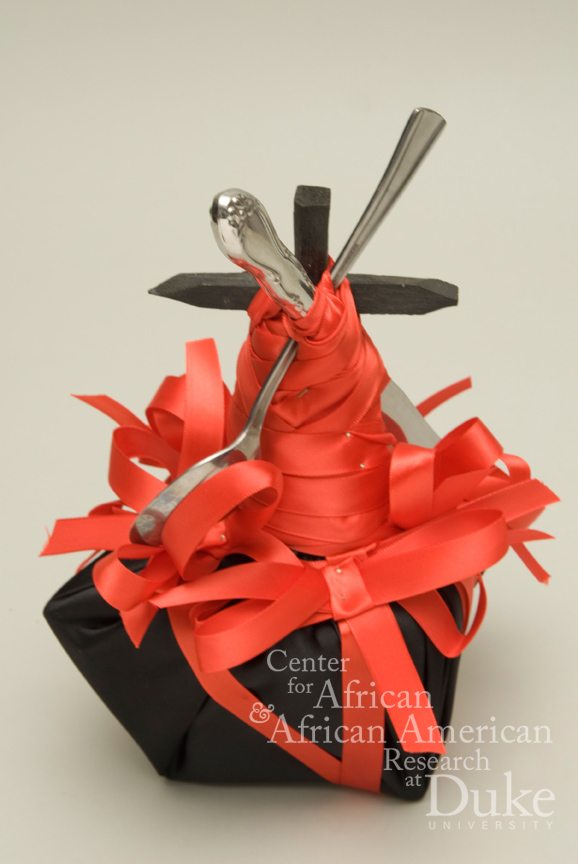
Madame Marie Maude Evans
29 cm tall
(centimeters)
Kalfou is a derivation of the French word “Carrefour” which means Crossroads. Like Legba, Kalfou is also the god of crossroads. Legba is the elderly lord of the crossroads in the Rada nation of Vodou/Sèvi Lwa. Kalfou is his counterpart in the Petwo nation–that is in the category of divinities indigenous to Haiti who are credited with the anger and violence that enabled the Haitian Revolution. He is there to determine which people are allowed to pass and which are kept out. He is also in charge of assuring safe arrival at a destination, though practitioners must ask his permission to pass. While Legba is the god of communication between people and gods, Kalfou governs relations between people. He is hot and violent and he lets nothing stop him when he has an objective. He is associated with fighting and making war and has 29 pwen spirits.
This paket kongo was made by wrapping a chaudie, which is a three legged cooking pot made of aluminum under his control with a handle on each side, in cloth. The chaudie is a symbol that everything is mixed and blended. Due to the concept that everyone must cross the crossroads at some point in his or her life, the chaudie represents something that everyone will come across.
This particular paket kongo is not aromatic. While paket’s kongo for Rada divinities like Ogou have a pleasant smell, paket’s kongo are different for the petwo divinities.
Kalfou is always depicted in red and black. His priests wear the red and black shirt and pants of a man. While outfits mix colors, some feature red on one side and black on the other, like the hat of Eshu in the famous Yoruba Atlantic tale.
The cross on the Paket kongo represents the fork that Madame Maude chose not to include. While there is supposed to be a complete cutlery set of a spoon, a fork, and a knife, Madame Maude says she would never put that complete combination together because it is too powerful and would give Kalfou the ability to do grave damage. She claims that if you do not want the spirit to do evil, you should not give it the full set of cutlery. She also reports that every paket kongo she makes either has just the cross or just 2 eating utensils and the cross. She also says the fork and knife together are too powerful, which is why she chose the spoon and knife combination.
The ribbons are meant to hold everything together, but also to be beautiful. While in most paket’s kongo, feathers represent the head of the lwa, in this case, the cross represents the head.
Combining the usual Kongo-Atlantic and Yorùbá-Atlantic styles of containment, the body of the my pakèt kongo for Kafou (A014) is a ceramic teakettle (chaudière) filled with the combination of substances that give him life and then cloaked in cloth and ribbons. Kafou is the lord of the crossroads in the Petwo “nation,” or denomination, of Haitian Vodou. Manmi Maude made him for me. [end caption]
In Illustration 62,
Kafou, lord of the crossroads in the Petwo “nation,” or denomination, of Haitian Vodou. Manmi Maude made him for me. The crucifix invokes the crossroads between two worlds—that of the living and that of the dead. The criss-crossed tableware embodies the god power to eat and to act aggressively on my behalf. Manmi Maude explains that one may wisely equip such a god with knife and spoon, knife and fork, or spoon and fork, but never all three. So equipped, the god would be strong enough to “eat” his owner.